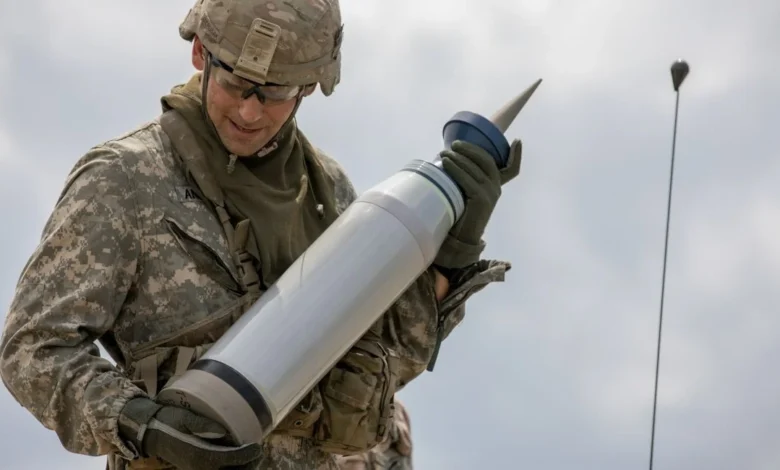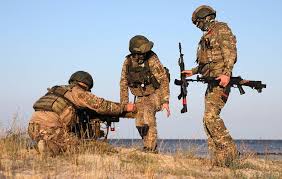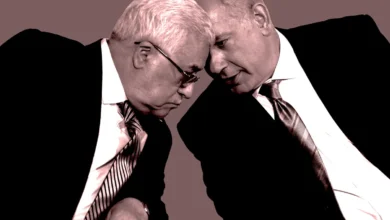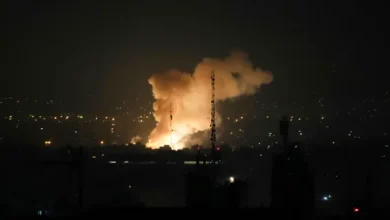Exclusive:ARMY PUTTING ‘OUTRAGEOUS SPIN’ ON DEPLETED URANIUM SCIENCE

Sole body cited by UK military to defend Ukraine receiving depleted uranium weapons has not published new research on the subject for over 20 years
Italy’s defence ministry has compensated soldiers who developed cancer after exposure to depleted uranium on service in the Balkans
After the invasion of Iraq, the UK military accepted it had a ‘moral obligation’ to help clear depleted uranium debris from the rounds it had fired
The Ministry of Defence claimed last week that research by the Royal Society – Britain’s premier scientific group – supported its controversial decision to send depleted uranium tank shells to Ukraine.
An MoD official briefed the media: “Independent research by scientists from groups such as the Royal Society has assessed that any impact to personal health and the environment from the use of depleted uranium munitions is likely to be low.”
The Royal Society was cited despite the group rebuking the Pentagon in 2003 for using their exact same research to justify American tanks firing the weapon in Iraq, Declassified UK has found.
When contacted, the scientific body told us: “In 2001/02, the Royal Society published two reports on the health hazards of depleted uranium munitions.” It provided links for the first and second report.
Their spokesperson added that depleted uranium “isn’t an active area of policy research for the Society, [and] we haven’t updated or published on this topic since those reports.”
In 2003, the US military used those Royal Society reports to defend the use of depleted uranium (DU) by coalition forces in Iraq.
That triggered a complaint to the media, with the Guardian saying the Royal Society was “incensed because the Pentagon had claimed it had the backing of the society in saying DU was not dangerous.
“In fact, the society said, both soldiers and civilians were in short and long term danger. Children playing at contaminated sites were particularly at risk.”
The chairman of the Royal Society’s working group on depleted uranium, Professor Brian Spratt, was quoted as warning that “a small number of soldiers might suffer kidney damage and an increased risk of lung cancer if substantial amounts of depleted uranium are breathed in, for instance inside an armoured vehicle hit by a depleted uranium penetrator.”
“In addition, large numbers of corroding depleted uranium penetrators embedded in the ground might pose a long-term threat if the uranium leaches into water supplies.”
He recommended that fragments from depleted uranium shells should be cleared up and long-term sampling of water supplies needed to be conducted.
Spratt also countered claims about the safety of depleted uranium made by the UK’s then defence secretary Geoff Hoon, stressing: “It is is highly unsatisfactory to deploy a large amount of material that is weakly radioactive and chemically toxic without knowing how much soldiers and civilians have been exposed to it.”
‘Cherry picked research’
Doug Weir, research director at the Conflict and Environment Observatory, told Declassified the MoD’s latest “spin” on the Royal Society’s research “was pretty outrageous, but not unprecedented”.
Weir edited a report in 2012 for the Campaign Against Depleted Uranium which said the MoD had “cherry picked research outcomes that maintained a view of DU as acceptable”, despite “a growing body of scientific evidence that highlighted uncertainty and recommended precaution.”
He recalled how a defence minister had once told MPs that an MoD review had found the use of DU was permissible under the Geneva conventions – when in fact no such review had been undertaken at that point.
“What they didn’t do was study civilian exposure, anywhere”
Weir acknowledged the MoD had conducted some of its own research on DU’s impact after invading Iraq, but “what they didn’t do was study civilian exposure, anywhere”.
Depleted uranium is a chemically toxic and radioactive heavy metal produced as waste from nuclear power plants. The military uses it for tank-piercing shells because it is extremely dense.
However, scientific debate continues about its long-term risks to human health and the environment in post-conflict zones.
Shells containing more than 2.3 tonnes of depleted uranium were fired by British forces in operations against Iraq in 1991 and 2003.
US troops fired far larger quantities, especially around the city of Fallujah, where it has been blamed for birth defects and a spike in cancer cases.
Contamination
The ammunition was also used by NATO on operations in Bosnia, Serbia, Montenegro and Kosovo during the breakup of Yugoslavia.
Italian soldiers who developed cancer after serving on those missions in the Balkans have successfully sued their defence ministry for compensation. Serbians have attempted similar litigation against NATO.
A study conducted in Kosovo by the UN Environment Programme (UNEP) shortly after that conflict ended found “only low levels of radioactivity”.
However, they were not able to consider the long term consequences and only inspected 11 out of 112 sites where DU had been fired.
A later UNEP study in Serbia did find more significant corrosion of DU shells and that many of them were lodged deep in the ground.
A subsequent report by the UN in Bosnia found drinking water had been contaminated, albeit at low levels.
After the invasion of Iraq, the MoD said “morally we do recognise an obligation” to help Iraq clear DU debris from the approximately 420 rounds it had fired.
Eight contaminated vehicles were removed and the UK’s Department for International Development did provide some funding for further clearance efforts, but it proved inadequate with disposal teams lacking radiation metres.
Mixed messages
The Kremlin has reacted furiously to the revelation that Britain is supplying depleted uranium to Ukraine, even though Russia upgraded some of its own tanks to fire the weapon in 2018.
In justifying the supply of DU shells to Ukraine, UK defence minister Baroness Goldie said the rounds “are highly effective in defeating modern tanks and armoured vehicles.”
However, her statement appears to contradict disparaging comments the British military has made about Russia’s armoured capabilities.
Ministers have repeatedly celebrated the success of UK-supplied shoulder-launched missiles at destroying Russian tanks.
The MoD told parliament yesterday Russia has lost 1,900 main battle tanks during the war in Ukraine.
And MoD defence intelligence said earlier this month: “The Russian military has continued to respond to heavy armoured vehicle losses by deploying 60-year-old T-62 main battle tanks”.
It described the vehicles as “vintage” and lacking in modern armour. A model of armoured personnel carrier “first fielded in 1954” was also now being deployed by Russia in Ukraine.
This suggests DU shells are not essential. Tanks supplied by Germany to Ukraine use armour piercing rounds made from tungsten instead.
The MoD press office did not address Declassified’s questions about their framing of the Royal Society’s research, or the compensation payments in Italy.
An MoD spokesperson said: “Alongside our granting of a squadron of Challenger 2 main battle tanks to Ukraine we will be providing ammunition, including armour piercing rounds which contain depleted uranium. Such rounds are highly effective in defeating modern tanks and armoured vehicles.
“The British Army has used depleted uranium in its armour piercing shells for decades. It is a standard component and has nothing to do with nuclear weapons or capabilities. Russia knows this, but is deliberately trying to disinform.”










